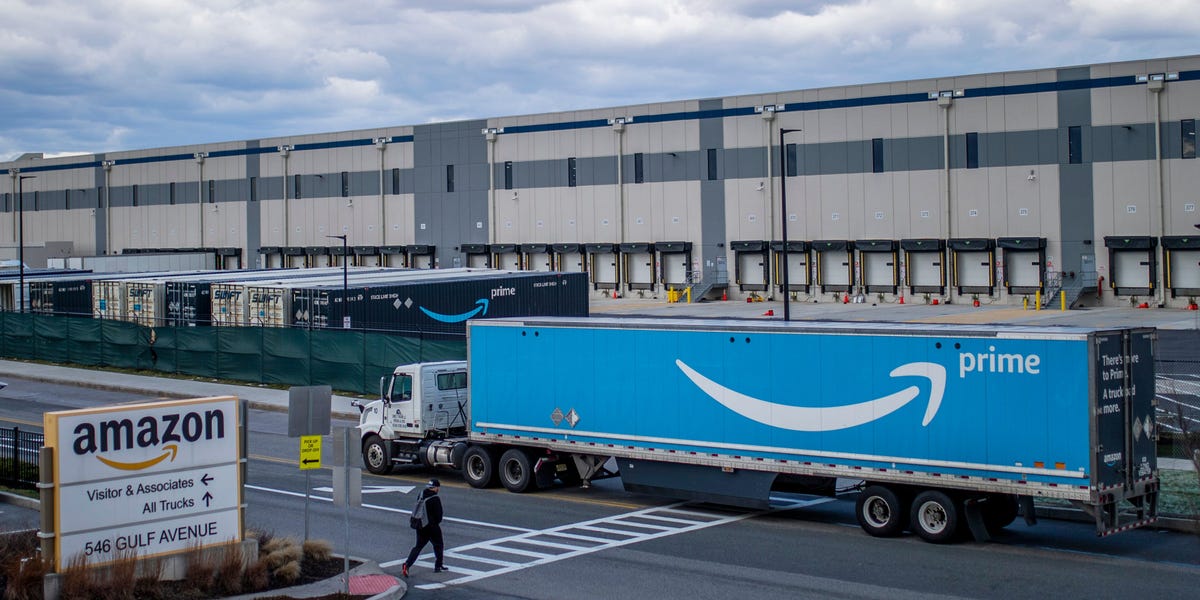- Amazon operates nearly 300 warehouses worldwide, with some as large as a million square feet.
- Amazon Warehouse is also a feature on the Amazon website where customers can find deals on pre-owned, used, and open box products.
Despite starting out as an online book seller in 1994, today Amazon is nearly the largest retailer in the world, second only to Walmart.
But while Walmart operates more than 10,000 brick-and-mortar stores in two dozen countries, the core of Amazon’s business is online, shipping most of its products directly to homes and businesses.
All that requires a substantial warehousing and distribution network. In 1997, Amazon had a single 93,000-square-foot warehouse in Seattle. Today, the retailer operates 110 warehouses in the US and another 185 internationally, though the size dwarfs that original warehouse with some as large as a million square feet.
How does Amazon choose warehouse locations?
As the company has grown, it has continued to add warehouses in strategic locations throughout the US and around the world. The company considers a variety of factors when choosing where to place warehouses and Amazon fulfillment centers. Many factors contribute to location decisions, though these are among the most important:
- Proximity. Amazon chooses locations based on customer proximity, positioning warehouses close to major population centers to minimize shipping and delivery costs.
- Transportation infrastructure. It’s also important for fulfillment centers to have close proximity to mature transportation networks including airports, seaports, rail lines, highways, and surface roads.
- Land cost. Because Amazon warehouses are so large, with some as much as a million square feet, land cost is an important consideration in the calculus of choosing a location.
In addition, Amazon takes into consideration proximity to suppliers and vendors to streamline the brand’s supply chain, local regulatory issues that could impact the retailer’s ability to operate effectively, environmental concerns (such as a location’s ability to help Amazon meet its goals around reducing its carbon footprint), and risk mitigation (regional susceptibility to natural disasters or geopolitical instability could deter Amazon from choosing a particular location.)
The number of Amazon warehouses is a moving target as the retailer adds new locations in response to demand.
What types of sellers work with Amazon warehouses?
Part of Amazon’s retail power comes from its Fulfilled By Amazon program, commonly called FBA. Small businesses commonly use the FBA program to sell products on the Amazon website and Amazon fulfills orders on their behalf automatically.
The FBA program is designed for sellers who want to leverage the scale of Amazon for their own inventory. Amazon offers variations for both individual sellers — people who sell infrequently or on a small scale — and professional sellers who work in bulk or larger volume.
Any seller can work with Amazon as long as they are able to successfully complete an Amazon seller account, shop products to Amazon warehouses as needed, and meet basic product requirements. The products must obviously be legal to sell in the US, for example, and fall into one of about 20 categories like beauty, books, business products, electronics, clothing, jewelry, home and garden, and others.
There are exceptions. Within each category, Amazon prohibits the sale of certain items, and maintains a master list of restricted products.
How do I know which Amazon warehouse to ship to?
If you’re part of the FBA program, you might want to know where to ship your products — after all, there are hundreds to choose from. The simple answer: Create your shipping plan on your Amazon Sellers Account website after manufacturing is complete and you are ready to ship.
Start your shipping plan by choosing the Listing section after clicking Inventory in your Sellers account, and Amazon tells you where to ship your products. If your shipment is large, Amazon might even divide the shipment between two or more warehouses.
What does an Amazon warehouse carry that a fulfillment center doesn’t?
Amazon generally uses the term fulfillment center to refer to its large warehouses. That’s because rather than simply warehousing products, Amazon uses the facilities to fulfill customer orders. They’re distribution centers where employees sort, retrieve, pack, and ship orders directly to customers. At many fulfillment centers, human associates work in concert with equipment that includes autonomous robots to quickly process orders.
Not all Amazon warehouses work this way, though — the retailer also operates much smaller warehouses that cater to the needs of Amazon Now and Amazon Fresh stores, for example.
What is Amazon Warehouse on Amazon.com?
Not to be confused with Amazon’s network of fulfillment centers around the world, Amazon Warehouse is a special section of the Amazon website where customers can find deals on pre-owned, used, and open box products.
Items listed in Amazon Warehouse are generally returned products. Items returned to Amazon are inspected with a quality check and given a grade based on their physical condition, packaging quality, missing accessories, and other criteria. They’re labeled with a condition — Like New, Very Good, Good, and Acceptable — and then placed for sale on the website.
Items sold on the Amazon Warehouse website are covered under Amazon’s normal return policy so that purchases can be returned for a replacement or refund.
Read the full article here





